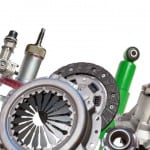In many cases, the mechanical strength of certain components is altered by the normal interaction between the parts that compose a machine. Heat treatments are an effective and necessary method to eliminate or reduce the consequences of machining, soften or harden a component and fully or partially modify the characteristics of a material.
Do you want to know more? Keep reading this post.
What are heat treatments?
Many materials that compose the machinery that is used in various business sectors experience an unavoidable loss of power as a consequence of the normal friction between the mechanical parts.
This loss of power might affect any characteristic of a material, whether in regard to its chemical composition or its structure. These depend on the resilience of the machinery, heating power, the machinability process, hardness and the resistance to wear.
You might be interested in: All you need to know about gear motors and their components
All of them are related to mechanical strength, which refers to the ability of a machine to withstand the regular interaction of its components without alterations.
In speed reducers and gear motors, a decrease in the mechanical strength is common and can be mitigated through heat treatments. Problems related to wear might be linked to many reasons, and the most common – or the one that should be most seriously considered – is the time factor. In other words, the duration of the components in general.
In this regard, heat treatments are paramount to relieve the consequences of wear. They involve a series of methods involving alloys and cooling that are applied to the material under various conditions (sudden temperature, speed, metal alignment, persistence in time, among others) with the purpose of optimizing the mechanical properties of the material, mainly focused on its elasticity, hardness and resistance.
Learn about the treatments applied by CLR to improve the resistance of gear motor parts
Types of heat treatments
As we have already mentioned, there are several types of heat treatments, and this variety is related to the ultimate purpose of the procedure. This great diversity requires a deep knowledge on the subject to arrive at effective solutions that are required by different mechanical requirements.
There are two main reasons to perform a heat treatment:
- When the purpose is to increase the hardness (hardening).
- When the purpose is to soften the material (annealing).
There are several procedures to achieve these objectives and manufacture parts that are better suited to the efforts related to the machine and the specific environment of each application.
Below we list the characteristics of the main types of heat treatments in existence.
Recommended reading: 10 Tips to prevent fatigue breakage in your mechanical parts
Hardening
Hardening means heating a material up to a specific temperature that exceeds its transformation point with the purpose of obtaining a specific crystalline structure. The material is immediately cooled down faster to achieve a martensitic, austenitic or bainitic structure, which offers a high hardness.
This rapid cooling is achieved by introducing the material in water, salts, oils, gases or air, and its speed will depend on the target results and the properties of the material.
In cases that require a full hardness, the cooling is usually interrupted at a temperature that ranges between 180°C (356°F) and 500° (932°F), resulting in a high resistance and hardness with minimal risk of deformation and changes in dimensions.
Tempering
Generally, this treatment is performed after hardening, which exponentially increases the hardness. While hardening that achieve this purpose, steel is quite brittle in this state and must be tempered at a temperature that ranges between 150°C (300°F) and its transformation point. The temperature differential and duration of this treatment on the material will influence the end result in regard to the resistance and hardness of the steel.
Annealing
Unlike the hardness provided by the hardening process, annealing softens the materials by balancing a crystalline structure that was deformed by exposure to cooling.
Case hardening
It consists on the penetration of carbon into the surface of the material by heating it to high temperatures (approximately 900°C [1650°F]) in a medium that encourages the incorporation of carbon into the surface throughout time. Gaseous mediums are commonly used since they provide for a better control over the treatment.
After the case hardening process, the material is rapidly cooled down with the purpose of achieving an optimal hardness, especially in low-carbon steels.
Nitriding
It consists on the incorporation of nitrogen into the surface of the material by means of a temperature of approximately 550°C (932°F) in a saline medium or an ammonia atmosphere during a specific time.
In this way, the surface gets enriched and hardened with minimal deformation and without cracks, thanks to the low temperature of the thermal treatment.
Carbonitriding
It consists on the incorporation of nitrogen and carbon, which offers many advantages to mechanical components, turning it into one of the most widespread treatments. It is performed under the same conditions as the case hardening treatment, through the use of gaseous mediums.
You might also be interested in: CLR gear machining: concept and manufactured parts
Importance and advantages of heat treatments
Guaranteeing the quality, performance and mechanical strength of the machinery is essential for any business. This is accomplished through heat treatments that result in these and other advantages, such as:
- An increase in the long-term performance of the mechanical parts based on the needs of their application.
- Time and money savings.
- Increasing the service life of the component.
- Mechanical strength and performance of the product thanks to the hardness obtained via the treatment, which offers the ability to withstand tensile forces.
- Wear reduction.
- Increase in the material’s formability and ductility.
- Better part performance, avoiding the uncertainty brought about by a part that did not undergo a heat treatment.
The use of heat treatments allows steel and its alloys, as well as other materials, to attain different characteristics. At CLR we have a track record of over 20 years in the design of mechanical components as per the highest European quality standards.










